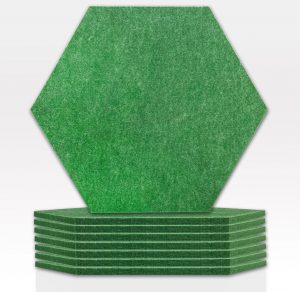As schools increasingly focus on creating an optimal learning environment for students, sound insulation for classrooms is becoming a top priority. The quality of classroom acoustics plays a significant role in enhancing the learning experience for students by reducing noise and improving speech clarity. However, achieving the ideal acoustic environment in a classroom can be a daunting task, especially for educators who lack the technical knowledge of sound insulation.

Whether you’re a teacher, school administrator, or a facilities manager, this post will provide you with the knowledge and tools to create an optimal learning environment for students while ensuring the comfort and safety of teachers and staff. So, if you’re looking to improve the acoustic quality in your classroom, keep reading to learn about the essential aspects of sound insulation that you need to know.
Acoustic analysis for classroom soundproofing
Sound insulation is an essential aspect when designing and constructing classrooms. A conducive learning environment is crucial in ensuring that students are comfortable and can concentrate on their studies. One of the most common issues in classrooms is noise, which can lead to distractions and disruptions.
Acoustic analysis is a vital tool in identifying and addressing sound issues in classrooms. It allows for the identification of sound sources and their intensity, which is critical in developing appropriate soundproofing measures. In this document, we will explore the use of acoustic analysis in classroom soundproofing, its benefits, and how it can be applied to improve the learning environment.
Materials for sound insulation
When it comes to sound insulation for classrooms, selecting the right materials is crucial to achieving optimal acoustic performance. Acoustic materials must be able to absorb, reflect, or diffuse sound waves effectively to prevent unwanted noise from entering or exiting the classroom. The two most commonly used materials for sound insulation are fiberglass and foam panels.
Alternatively, foam panels are lightweight and easy to install, making them a go-to choice for temporary soundproofing solutions. They are also highly effective in absorbing sound waves and can be used to create customized sound insulation solutions tailored to the specific needs of the classroom.
Installation process for soundproofing
When it comes to sound insulation for classrooms, the installation process can vary depending on the type of soundproofing material you choose. Whether you opt for acoustic panels, ceiling tiles, or other sound insulation products, proper installation is crucial to ensure maximum effectiveness. Here are three basic steps to follow when installing soundproofing materials:
Benefits of sound insulation
Sound insulation is an essential element to consider when designing a classroom. It can provide numerous benefits, including creating a better learning environment for students, reducing noise pollution, and improving acoustics. With proper sound insulation, classrooms can enhance concentration and focus, leading to better academic performance.
Also, sound insulation can help reduce noise pollution from external sources, such as traffic or construction, which can be a significant distraction for students and teachers. Furthermore, it can improve acoustics, allowing teachers to communicate more effectively and ensure that all students can hear and participate in classroom discussions.
Overall, implementing sound insulation in classrooms can greatly benefit the learning experience and contribute to a more conducive educational environment.

One Response